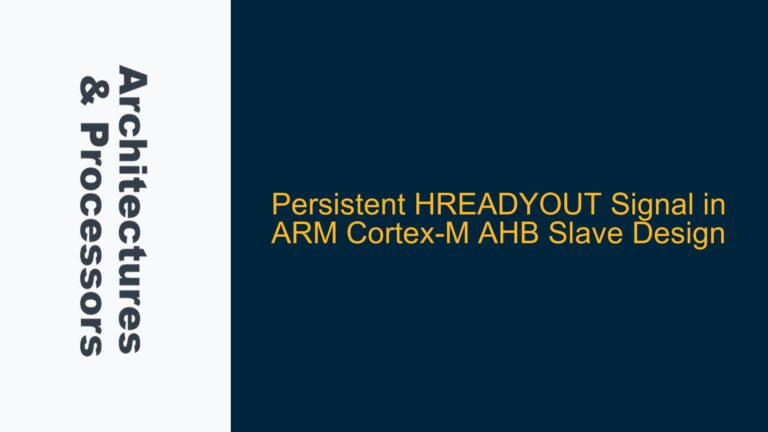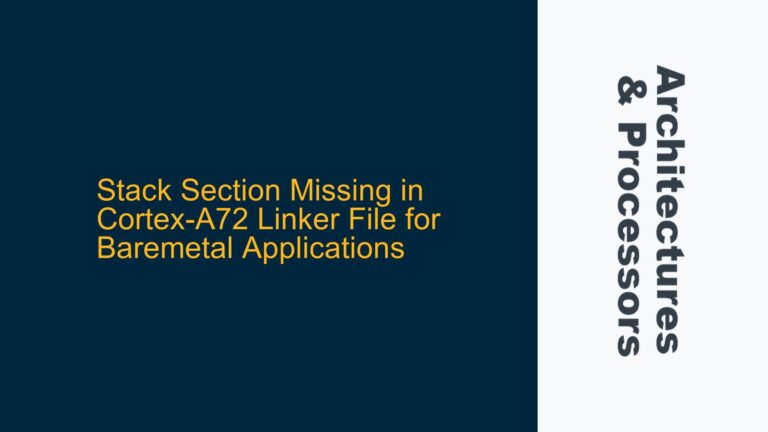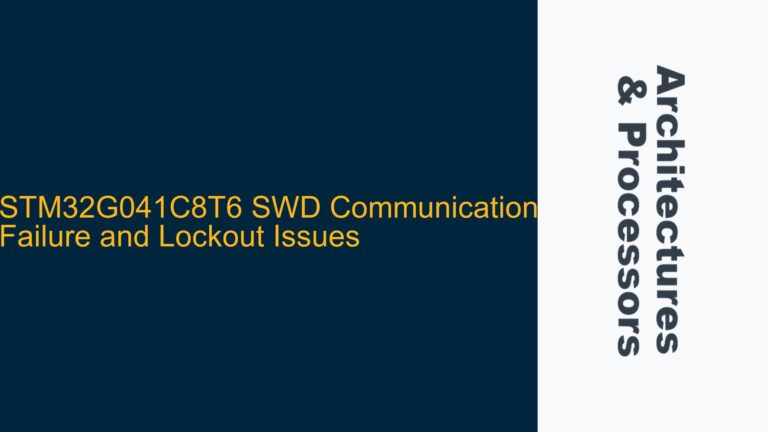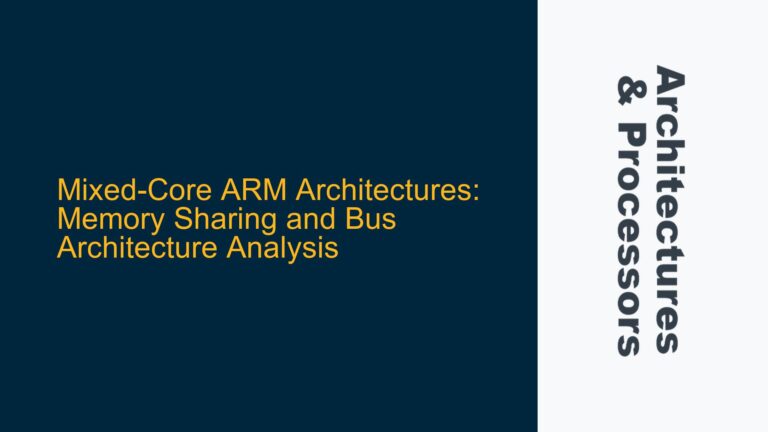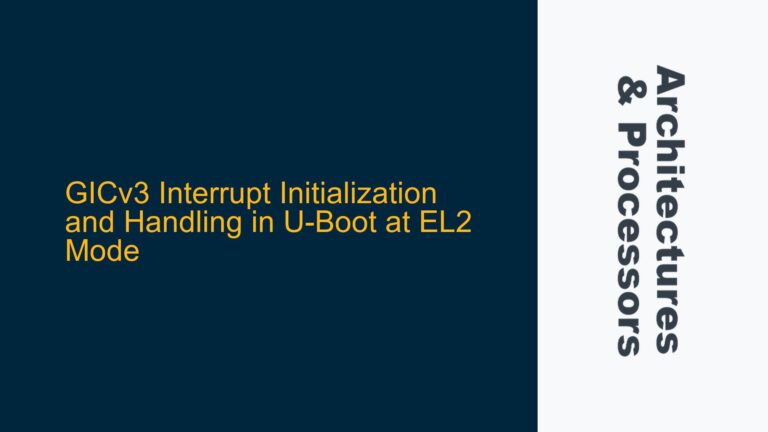APB Protocol’s Single-Transfer Nature and Its Implications
The Advanced Peripheral Bus (APB) is a key component of the ARM Advanced Microcontroller Bus Architecture (AMBA) family, designed for low-bandwidth, low-power peripheral communications. Unlike its counterparts, AXI (Advanced eXtensible Interface) and AHB (Advanced High-performance Bus), APB is inherently designed to handle single transfers per transaction. This means that each read or write operation on the APB bus is an isolated event, with no inherent support for multi-beat transfers within a single transaction.
In AXI and AHB, multi-beat transfers are facilitated through specific signals such as AxLEN in AXI and HBURST in AHB, which define the number of beats in a burst transaction. These protocols are optimized for high-performance data transfers, where multiple data items can be transferred in a sequence without the need for repeated address and control signal setup. However, APB lacks such burst signaling mechanisms, making it fundamentally different in its operation.
The single-transfer nature of APB has significant implications for system design and performance. For instance, when interfacing with peripherals that require multiple data transfers, the APB bridge must convert multi-beat transactions from AXI or AHB into a series of individual APB transfers. This conversion process can introduce latency and reduce overall system efficiency, particularly in scenarios where high data throughput is required.
Moreover, the absence of burst signaling in APB means that each transfer must be individually addressed and controlled, leading to increased overhead in terms of signal transitions and power consumption. This can be particularly problematic in power-sensitive applications, where minimizing energy consumption is critical.
Multi-Beat Sequences in APB: Bridging the Gap Between AXI/AHB and APB
While APB does not natively support multi-beat transfers within a single transaction, it is possible to achieve multi-beat sequences through a series of individual APB accesses. This approach involves converting multi-beat transactions from AXI or AHB into a sequence of single APB transfers, which can then be executed sequentially.
The conversion process typically involves an APB bridge, which acts as an intermediary between the high-performance AXI/AHB bus and the low-power APB bus. The bridge is responsible for translating the burst signals from AXI (AxLEN) or AHB (HBURST) into a sequence of individual APB transfers. During this process, the bridge may keep the PSEL (Peripheral Select) signal high for the duration of the sequence, or it may pulse PSEL low between transfers, depending on the specific design of the bridge.
One of the key challenges in implementing multi-beat sequences in APB is ensuring that the target peripheral correctly interprets the sequence of transfers. Since APB does not have a burst length signal, the peripheral sees each transfer as an independent event. This can lead to potential issues if the peripheral expects a continuous burst of data, as it may not be able to distinguish between a sequence of individual transfers and a true burst transaction.
To address this challenge, designers must carefully consider the timing and signaling requirements of the target peripheral. For example, if the peripheral requires a continuous stream of data, the APB bridge must ensure that the PSEL signal remains high throughout the sequence of transfers, effectively emulating a burst transaction. Alternatively, if the peripheral can tolerate gaps between transfers, the bridge may pulse PSEL low between transfers, reducing power consumption and signal transitions.
Another consideration is the handling of address and control signals during multi-beat sequences. Since each APB transfer requires its own address and control signals, the bridge must generate these signals for each transfer in the sequence. This can introduce additional complexity, particularly in systems with multiple peripherals and complex addressing schemes.
Optimizing APB Transfers: Strategies for Efficient Multi-Beat Sequences
To optimize the performance of multi-beat sequences in APB, designers can employ several strategies that minimize latency, reduce power consumption, and ensure correct operation of the target peripherals.
One approach is to use a dedicated APB bridge that is specifically designed to handle multi-beat sequences efficiently. Such a bridge can be optimized to minimize the overhead associated with generating address and control signals for each transfer, as well as to manage the PSEL signal in a way that meets the timing requirements of the target peripheral.
Another strategy is to carefully design the timing of the APB transfers to ensure that the sequence of individual transfers is executed as quickly as possible. This can be achieved by minimizing the delay between transfers and ensuring that the bridge is able to generate the necessary signals in a timely manner. Additionally, designers can use pipelining techniques to overlap the execution of multiple transfers, further reducing latency and improving overall system performance.
Power consumption can also be optimized by carefully managing the PSEL signal during multi-beat sequences. For example, if the target peripheral can tolerate gaps between transfers, the bridge can pulse PSEL low between transfers, reducing power consumption and signal transitions. Alternatively, if the peripheral requires a continuous stream of data, the bridge can keep PSEL high throughout the sequence, ensuring that the peripheral remains selected and ready to receive data.
In addition to these strategies, designers can also consider the use of advanced verification techniques to ensure that the multi-beat sequences are correctly implemented and that the target peripherals operate as expected. This can include the use of simulation environments that model the behavior of the APB bridge and the target peripherals, as well as the use of formal verification techniques to prove the correctness of the design.
By carefully considering these strategies and employing advanced design and verification techniques, designers can effectively bridge the gap between the high-performance AXI/AHB buses and the low-power APB bus, ensuring efficient and reliable operation of the overall system.
Conclusion
The single-transfer nature of the APB protocol presents unique challenges for system designers, particularly when interfacing with high-performance buses like AXI and AHB. While APB does not natively support multi-beat transfers within a single transaction, it is possible to achieve multi-beat sequences through a series of individual APB accesses. By carefully designing the APB bridge and optimizing the timing and signaling of the transfers, designers can minimize latency, reduce power consumption, and ensure correct operation of the target peripherals. Advanced verification techniques can further enhance the reliability and performance of the system, ensuring that the multi-beat sequences are correctly implemented and that the overall system operates as intended.


